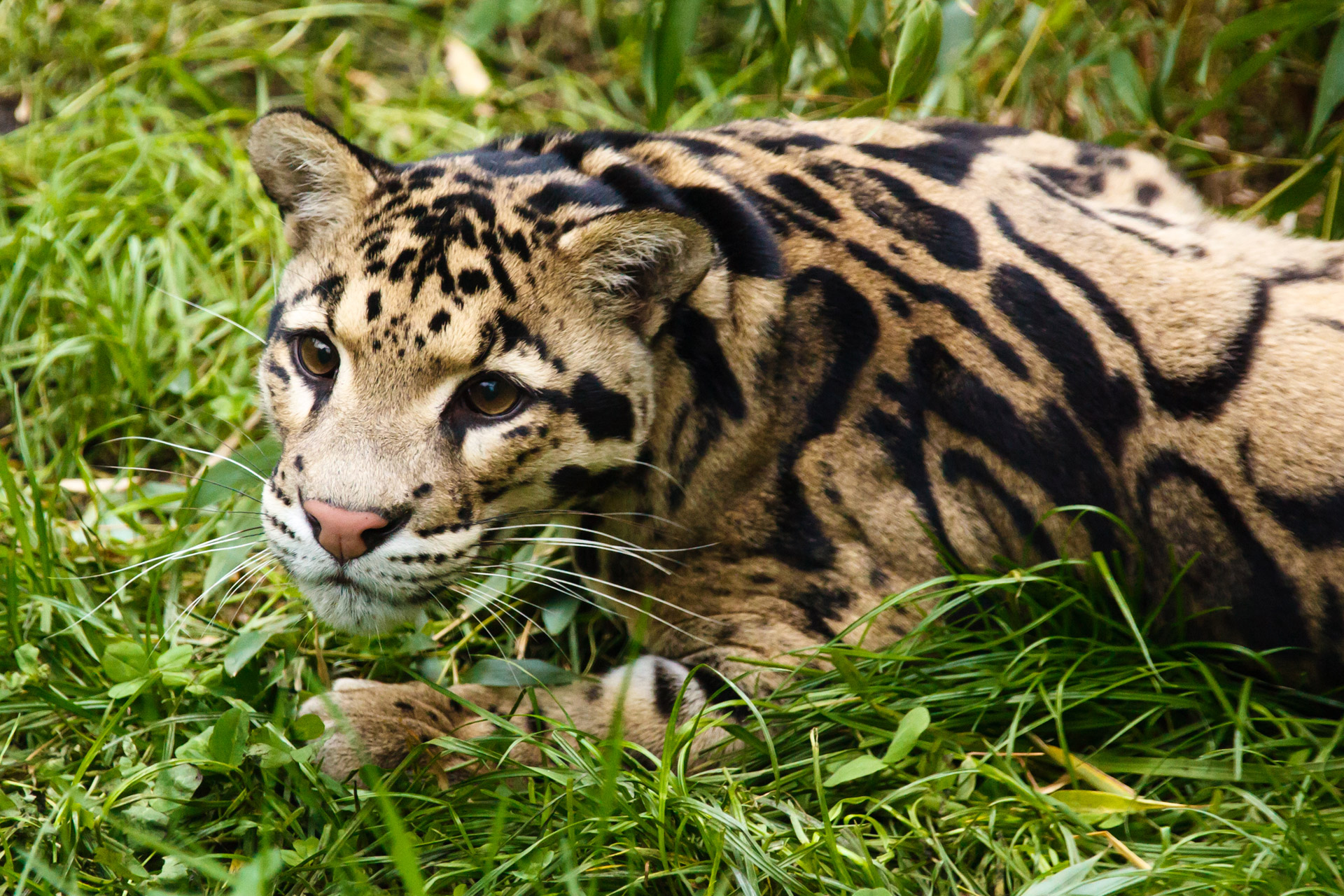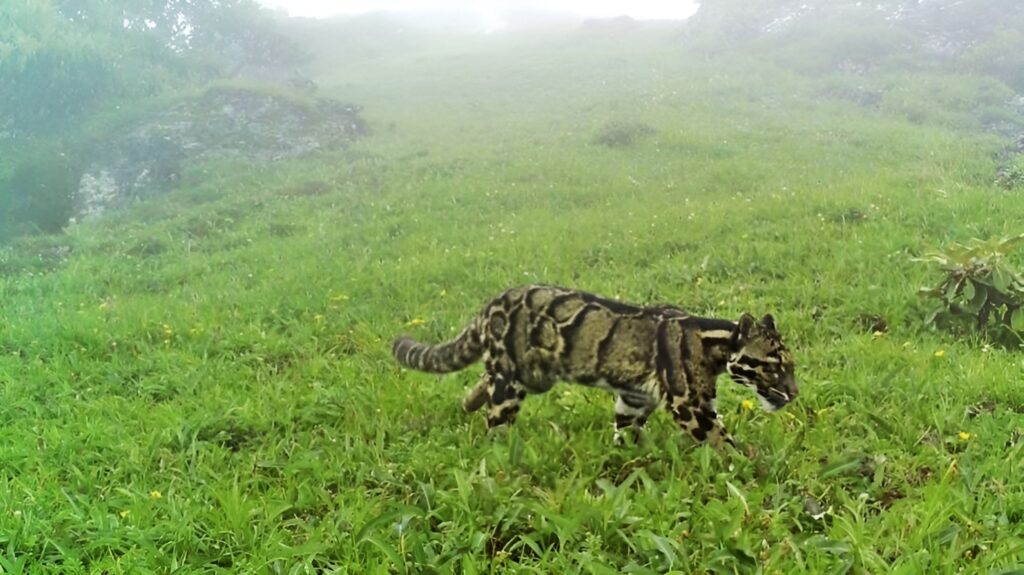Clouded leopards face uphill battle for survival

IUCN’s assessment of clouded leopards in 2021 estimated global population of 3,700-5,580 mature individuals
Clouded Leopards or Neofelis nebulosa are called as such due to the the large, blotchy, cloud-like markings on their body, head, legs and tail. Their yellow-brown bodies are rather long and slim and their hind legs are noticeably longer than their front and the tail, about 1 m long, is the longest amongst all leopards.
Their broad paws, short legs, and long tails make them good tree climbers. They can climb up and down, hang upside down, and hunt in trees. As clouded leopards prefer to live and hunt in the trees, their bodies have evolved to suit the requirement of their habitats, including their long tails and flexible ankle joints that enable them to climb down trees head first. Another trait highlighting their arboreal habitat is that that their upper canines are the longest among all living cats as they are an adaptation to holding onto prey caught in the trees, a more difficult feat than catching it on the ground.

Rare clouded leopard spotted in Nagaland mountains (Photo: WPSI/Thanamir Village)
Clouded leopards are found in Asia, in a region stretching eastwards from Nepal through to Bhutan, North-Eastern India, southern China and South East Asia. In India, their main habitats are to be found in Mizoram, Nagaland, Arunachal Pradesh, Meghalaya and Tripura.
Sepahijala Wildlife Sanctuary at Bishalgarh in Tripura is one of the most famous areas for spotting clouded leopards in India and visitors from across the country and indeed the globe turn up there, eager to catch a glimpse of the elusive beast.
The clouded leopard was believed to be a single species till 2006. Recent genetics and morphological-based research has revealed that two species of clouded leopards exist. The species found along Sumatra and Borneo was named Neofelis diardi (Sunda Clouded Leopard).
The status of the clouded leopard population in the wild is difficult to estimate but they have been classified as vulnerable and figure on the Red List of the International Union for Conservation of Nature (IUCN), an international body that monitors the status of global biodiversity.

Clouded leopard figure on the Red List of IUCN (Photo: ASIAWIRE)
IUCN’s assessment of clouded leopards in 2021 estimated global population of 3,700-5,580 mature individuals. The decline is attributed to threats like exploitation, targetted hunting, incidental mortality and habitat loss. The species natural habitat has been fragmented and decreasing at a rate of 10 pc year since 1997.
In 2018 India added the clouded leopard to its list of Recovery programme for critically endangered. The highest concentration of these animals in India is found in Dampa in Mizoram. The region is conducive to the leopard’s growth as it has an inaccessible terrain and minimum human population. The population density of clouded leopards in Dampa Tiger Reserve is estimated at 5.14 per 100 sqkm.
It is estimated that there is no single population of this species that includes more than 1,000 adults and hunting for their skins and other body parts is still fairly common in many countries, even though it is strictly prohibited by law everywhere.
For instance, in Myanmar, 301 body parts of 279 animals were found in four markets. In Nepal, 27 cases of clouded leopard body parts were discovered between November 1988 and March 2020 in nine districts of the country, comprising at least 51 individual clouded leopards. In 17 of these cases, the poachers and traders were arrested.
The IUCN assessment paints a picture of a species facing threats to survival across much of its range, particularly in Southeast Asia. “The biggest threat for the mainland clouded leopard is almost certainly poaching due to snaring, both directly targeted at clouded leopards but also where clouded leopards are caught as bycatch,” says the report by IUCN.









